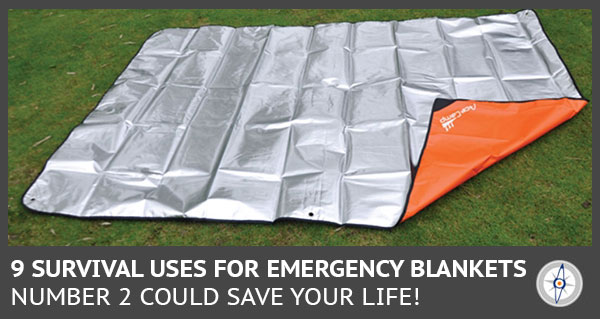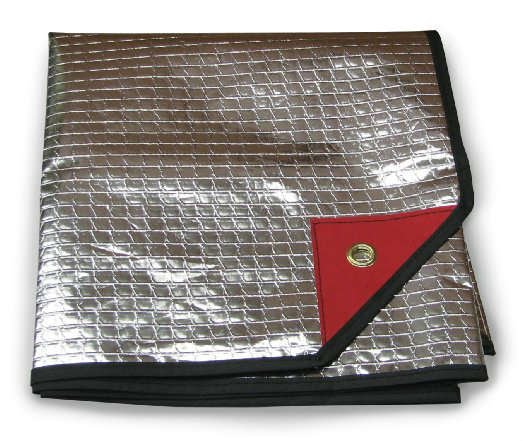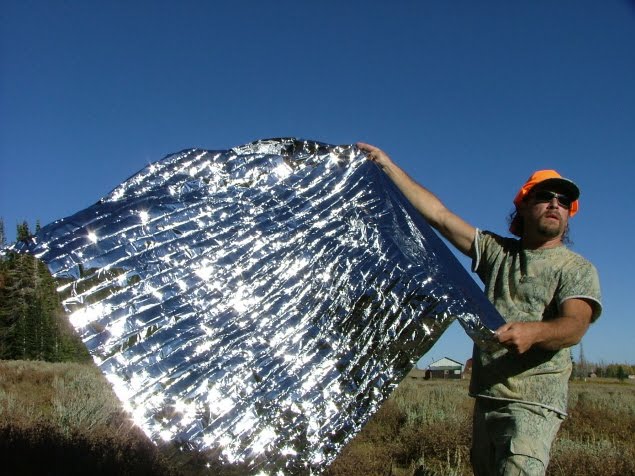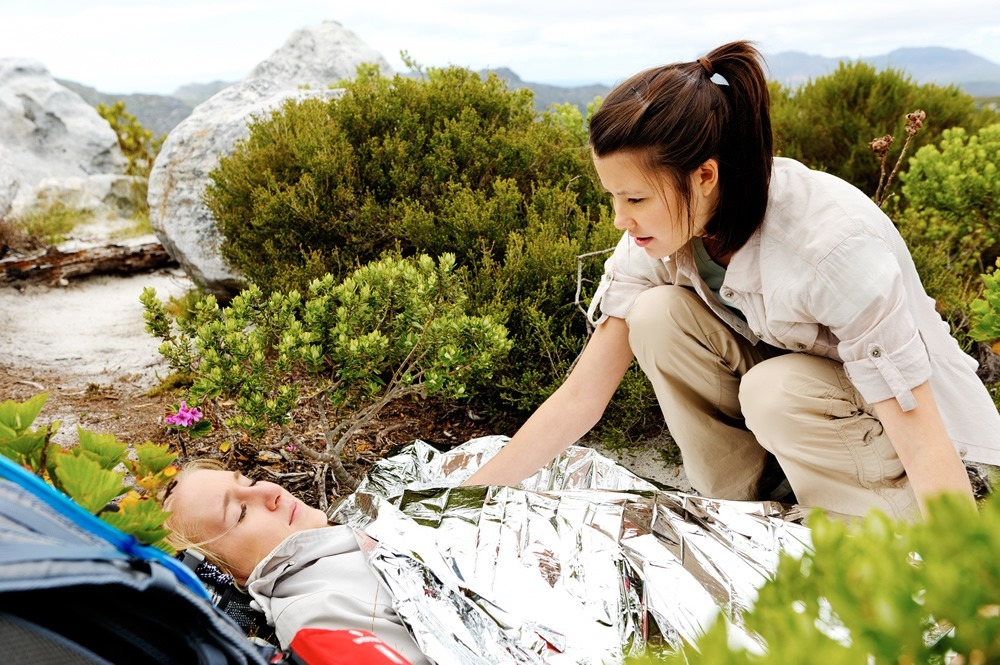
It was my very first survival challenge, and the temperature was dropping. It was late September, and a storm was rolling in. The forecast called for 30 MPH winds, hail, and heavy rain all night. My plan had been to build a shelter with a watertight roof and sit by the fire all night.
However, I made one huge error. I spent all day building a shelter with a roof that was too far off of the ground. Then, I ran out of time before dark, so I was unable to build a platform off of the ground. I would likely be sitting in the rain all night.
The rain started to pour, and sure enough the wind blew it right into my shelter. My fire was doused, and the temperatures had dropped into the low 50’s. By 1am I was soaked through and shivering uncontrollably, and I felt I would be in the throes of hypothermia soon. With this being my first solo challenge, I had brought plenty of backup gear for situations like this.
I had not planned to use it, but I had placed an emergency blanket in my pack. I decided to bite the bullet and pull out the blanket. After wrapping up I was instantly warmer. I have no doubt that this blanket is the primary reason I made it through my first survival challenge without tapping out.
In this article, I will cover several of the different ways you can use an emergency blanket in a SHTF scenario.
Types of Emergency Blanket
On a side note, there are two primary types of emergency blankets. You have probably seen the thin space blankets that only cost about a dollar. They do reflect 90% of your body heat back to you, but they tear easily. What I will be referring to in this article is the more durable version. There are, however, other uses that can be accomplished with the thin mylar blankets.

This is a tarp style emergency blanket with the same reflective coating but also a fibrous structure that will not tear. It also has grommets at the corners to tie the blanket down.
#1 A quick waterproof shelter
If rain is coming and you need a shelter that you know will not leak, you can use an emergency blanket in several ways. You can quickly put up an A-frame shelter or a lean-to shelter. This can keep you dry through the night, and the reflective side can be faced inward to keep warmer.
#2 Collecting rainwater
Finding clean water in the wild can be difficult, but collecting rainwater is almost always a way to find safe water. If you have a low spot or can dig a small pit, you can lie out the emergency blanket.
Then place rocks or branches around the edges and place one rock in the center. The surface area provided by the blanket will collect a good amount of water quickly.
#3 Signaling for help
One of the best ways to signal for help is a reflective ground to air or ground to ground signal. If you do not have a signal mirror, you can use the reflective side of your emergency blanket.

Either lie it out on a hillside and weigh down the edges, or tie it to a frame so you can actually aim your signal at a target.
#4 Wrapping up
If it is too late to put up a shelter because you are too wet or too cold, just wrapping up in an emergency blanket can make a huge difference.

Being thermal, reflective, and waterproof, it can mean the difference between a cold night and death by hypothermia.
#5 Making a bear bag
If you are in bear country and have any kind of food or hygiene products with a scent, you could be in danger. It is not uncommon for bears to smell these items from miles away and come searching for food.
If you wrap these items in your emergency blanket and hoist it at least 10 feet up into a tree, your items should be protected. Then set up your camp at least 100 yards away and you greatly reduce the risk of bear attack.
#6 Protect your pack
Most backpacks and hiking packs are not 100% waterproof. However, your emergency blanket is. You can quickly wrap your pack in your blanket and secure it with some cordage to ensure that none of your gear gets wet.
#7 Smoke meat for preservation
If you are lucky enough to kill a large animal such as a deer or wild hog, one issue you will encounter is how to preserve the meat. You will only be able to eat a small portion of the meat before it spoils unless you preserve it.
Smoking it is one of the best ways to do that. After slicing the meat thin and starting a fire, you will need to build a rack above the fire. Then you need to trap the smoke against the meat to kill bacteria. Wrap your emergency blanket around the rack with the reflective side facing inwards. This will reflect heat and trap smoke so the meat is slowly dried and not cooked.
#8 Block the sun
If you are in a hot environment and the sun is beating down on you, you can use your emergency blanket to reflect away heat. This is the opposite principle to wrapping up in an emergency blanket in cold weather. Just suspend the blanket above you to create shade, and face the reflective side towards the sun to bounce away the rays.
#9 Reflect heat from a fire
Heat from a fire radiates similarly to the rays of the sun. If you have a fire built and want to direct more heat into your shelter, you can use your emergency blanket.
Drive two long stakes into the ground on the opposite side of the fire from your shelter. Then attach the blanket vertically with the reflective side facing towards you. This will both block wind and greatly increase the heat.
